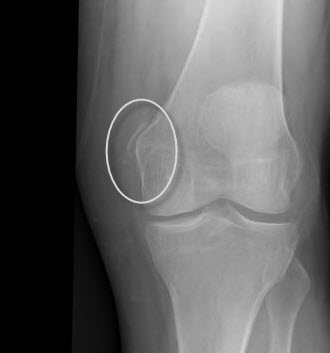Last Updated on October 29, 2023
Pellegrini Stieda syndrome is the presence of pain and limitations of movement of the knee in the patient with a previous injury to the medial collateral ligament of knee, due to ossification of the femoral attachment. The calcified lesion is known as Pellegrini Stieda lesion or sign.
Most of the cases of Pellegrini Stieda lesions are not symptomatic, and Pellegrini Stieda syndrome is said to exist when the lesion becomes symptomatic i.e. pain and restriction of movements.
Pellegrani Stieda syndrome is a rare condition and has been named after Italian surgeon Augusto Pellegrini and German surgeon Alfred Stieda.
Relevant Anatomy
The medial collateral ligament extends from the femoral medial epicondyle to the medial condyle and superior part of the medial surface of the tibia.
The deep fibers of the medial collateral ligament are firmly attached to the medial meniscus and the fibrous capsule. Superiorly it may be in continuation with adductor magnus.
It is a common ligament to knee to be injured.
Presentation of Pellegrini Stieda Syndrome
The stiffness of the knee is the primary complaint, particularly when attempting to straighten the knee. Twisting of the knee and increased physical difficulty may also be difficult.
Pain is another complaint. On examination, the tenderness may be present on the inner aspect of the knee. A palpable lump may be present
Imaging
The standard anteroposterior x-ray would show a linear soft tissue opacity medial to the femoral condyle. The linear fashion of ossification is often suggestive of calcification of the proximal aspect of the medial collateral ligament. The calcification may also involve the adductor magnus tendon.
Computed tomography would also show heterotopic ossification of the femoral attachment of the medial collateral ligament.
MRI would reveal a corticated structure within the proximal MCL, with no evidence of fat content.
MRI is invaluable in defining the anatomy of the structures and confirmation of the site of calcification.
Treatment of Pellegrini Stieda Syndrome
Nonoperative measures include rest and use of ice massage after activity. Analgesic medications like NSAIDs can be used. Strenuous activity should be avoided.
When conservative treatment is not successful, surgery can be considered. Surgical treatment consists of excision of the bony fragment with careful repair of the medial collateral ligament.
